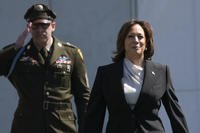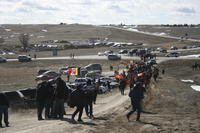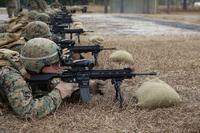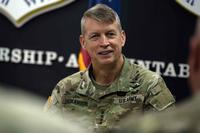Military officials reportedly are considering keeping thousands of American troops in Afghanistan beyond the end of next year, in what would be a departure from current plans to leave only a small force of a few hundred troops behind.
The Wall Street Journal reported late Thursday that Army Gen. John Campbell, the top U.S. commander in Afghanistan, has submitted five different recommendations for allied troop levels to the Pentagon and NATO officials in Brussels. The paper reported that the options include keeping the U.S. presence at or near 10,000 troops; reducing the number to 8,000; or continuing with the current drawdown plans.
The paper reported that the Pentagon so far has not made a formal recommendation to the White House on any changes in the troop presence, though one is expected in the coming days.
This past March, President Barack Obama announced that the U.S. would keep 9,800 troops in Afghanistan through the end of this year in response to a request by Afghan President Ashraf Ghani The original plan called for a reduction to 5,500 troops by the end of 2015.
"Afghanistan remains a very dangerous place," Obama said at the time in explaining his decision. The president had previously pledged to leave only a small force in Afghanistan that could be based at the U.S. Embassy in Kabul by the time he left office.
NATO and the U.S. currently have a combined force of about 13,000 in Afghanistan, mostly engaged in training and support following the end of the combat mission last year. However, the Journal reports that some officials worry that too large a troop reduction could increase the pressure on Afghanistan's fledgling government from the Taliban and other militant groups, including those claiming loyalty to ISIS.
Indeed, some officials believe that the Iraqi army would have been able to fight off ISIS' surprise offensive in the summer of 2014 if the U.S. had kept several thousand advisers in Baghdad. One senior military official told the Journal that current drawdown plans raise the risk of Afghanistan's collapse to an "unacceptable level."
However, others believe that it is U.S. funding, not U.S. troops that are the key to Afghan stability and believe the U.S. could go ahead with the withdrawal plans already in place.
Any U.S. decision on troop levels would be closely watched by NATO, with some allied officials saying that a larger American presence would enable them to keep their current troop levels and keep several military bases operating around the country. Unlike the U.S., NATO has never publicly committed to any timeline for troop withdrawal from Afghanistan.
"There are 30-plus countries ready to contribute; the question is how big the U.S. will be," one NATO official told the Journal. "Enablers give others confidence that if they get in a real pinch, the U.S. will be able to help them out. Will the U.S. provide the backbone around which NATO brings 30 more countries?"


























